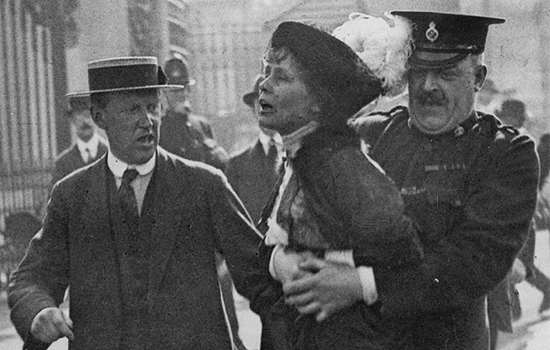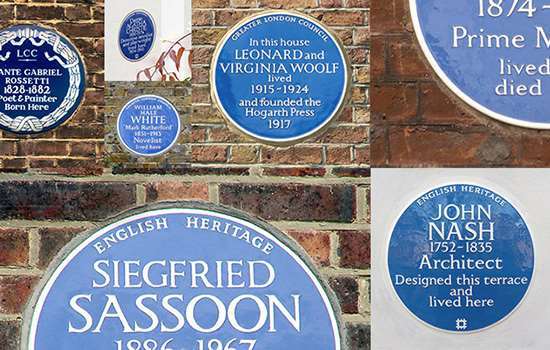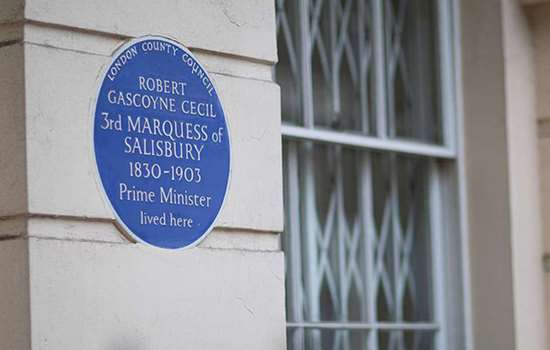GREENE, Hugh Carleton (1910-1987)
Plaque erected in 2018 by English Heritage at 25 Addison Avenue, Holland Park, London , W11 4QS, Royal Borough of Kensington and Chelsea
All images © English Heritage
Profession
Broadcaster
Category
Journalism and Publishing, Radio and Television
Inscription
Sir HUGH CARLETON GREENE 1910-1987 Journalist and Director-General of the BBC lived here 1956-1967
Material
Ceramic
Sir Hugh Carleton Greene was Director-General of the BBC for over nine years. A champion of liberal values, his time in charge is often seen as an embodiment of the 1960s zeitgeist. At the height of his career he lived at 25 Addison Avenue in Holland Park, where he is now commemorated with a blue plaque.
EARLY JOURNALISM
The younger brother of novelist Graham Greene, Hugh Carleton Greene graduated from Oxford University in 1933 and moved to Munich soon after, where he worked for the New Statesman and the Daily Herald. He later became the chief correspondent for the Daily Telegraph in Berlin, but was expelled from Nazi Germany in May 1939. Continuing to flee the advancing German forces in Warsaw and Amsterdam, he arrived back in England and accepted a volunteer commission in RAF intelligence, interrogating captured pilots.
Greene joined the BBC in October 1940, and was soon heading its German service. He was quickly marked out as being of ‘exceptional value’ to the BBC despite being ‘self-willed and at times mulishly obstinate’. He developed a reputation for aloofness, partly attributable to shyness – standing at 6 foot 7 inches, he was, said one observer, ‘a lonely tower of a man’. Greene could be ruthless when the occasion demanded it though, and once sacked an employee on the spot for making an anti-Semitic joke.
MODERNISING THE BBC
After a couple of secondments – to Hamburg and Malaya – Greene returned to London and the BBC in 1951. His appointment as Director of News and Current Affairs in 1958 is considered a milestone in the development of BBC news broadcasting. Greene overturned the newsroom’s cautious and deferential tone and modernised the channel, promoting bolder journalism.
His promotion to Director-General in 1960 brought about further far-reaching changes. His nine-year spell in charge was typified by innovatory and risk-taking TV programmes such as the satirical That Was The Week That Was (1962–3), the comedy Till Death Us Do Part (1965–75) and the gritty drama of The Wednesday Play (1964–70), including, most famously and controversially, ‘Cathy Come Home’ (1966), in which a young mother bore a child out of wedlock.
Greene later said his aim was ‘to make the BBC a place where talent of all sorts, however unconventional, is recognised and nurtured’. There were, however, limits to his liberalism: he drew the line at showing The War Game (1965), a documentary about nuclear war. But for conservative critics, such as Mary Whitehouse, Greene was held personally responsible for the so-called ‘moral collapse’ of the sixties and the seventies.
Apart from the modernising the BBC and dramatically increasing its audience share, Greene also oversaw the introduction of BBC2, Radio One and the reshaping of the national radio network.
ADDISON AVENUE
Greene lived at 25 Addison Avenue at the apex of his career. He moved in March 1956, when he asked for his free BBC television set – then a considerable perk – to be moved to his new address. Many of his key achievements as Director-General happened in the time that he lived here, perhaps chief among them the publication of the Pilkington Report in June 1962, which set the tone for broadcasting for the following decade and longer. As part of his lobbying efforts for the report, Greene launched a successful charm offensive at Lord Reith aimed at getting his predecessor’s support, which included multiple invitations to 25 Addison Avenue.
However, number 25 was not to prove the scene of domestic bliss. It was the end of his marriage to his second wife, Elaine Shaplen, that prompted Greene’s departure from Addison Avenue in 1967.
Greene died of cancer in 1987 and was buried in Cockfield, Suffolk. His headstone reads ‘Because I believe in nothing, I am unwilling to disbelieve in anything’ – words that had come to him in a dream.
To find other plaques relating to the history of the BBC, see the organisation’s heritage trail.
Nearby Blue Plaques
More About Blue Plaques



